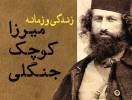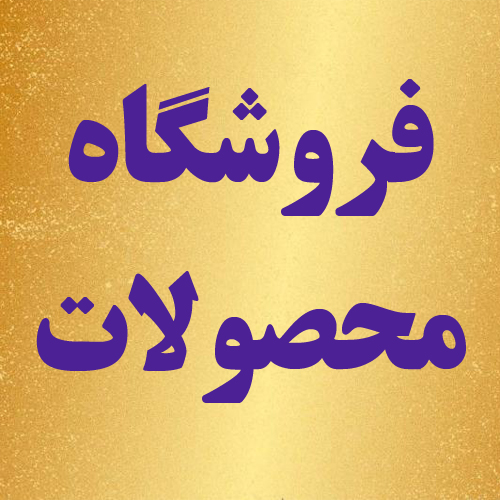
“Martyred Grand Ayatollah Hajj Mullah Muhammad Khomami” his role in Gilan’s legitimacy movement and his leadership of the constitutional revolution
چکیده انگلیسی کتاب آیت الله خمامی
Grand Ayatollah Hajj Mullah Muhammad Khomami was a renowned religious authority in Gilan province (north of Iran) during the last years of Naser Al-Din Shah Qajar’s tenure and during constitutional revolution. He made a significant contribution to the formation of constitutional movement that ultimately led to constitutional revolution.
چکیده انگلیسی کتاب آیت الله العظمی خمامی
“Martyred Grand Ayatollah Hajj Mullah Muhammad Khomami” his role in Gilan’s legitimacy movement and his leadership of the constitutional revolution
For Institute of Research on Islamic Campaigns
Written by: Meisam Abdullahi, Muhammad Abdullahi
Published by: Sahife Marefat
First published in summer 2014, Qom, Iran
www.rangeiman.ir
In Iran’s contemporary history, religious and original movements were launched by religious figures pursuing one common goal, namely opposing despotism and colonialism. Iran’s constitutional revolution is a typical and shining example of such movements that came to fruition through the efforts of prominent Shia religious figures and Grand Ayatollahs. The constitutional revolution had many ups and downs. Meanwhile, colonialist and aggressive states strived to wrest control of these movements. These arrogant powers sought to penetrate into popular movements with people ostensibly fighting for lofty causes such as nationalism, liberalism, etc. but really to take these movements out of the grip of people and serve the interests of colonialists. As the course of history witnessed, whenever insightful, cognizant religious leaders stepped into political arena, they mounted heroic resistance till the last drop of their blood and sacrificed their lives but raised a formidable stumbling block against colonialists’ progress.
Grand Ayatollah Hajj Mullah Muhammad Khomami was a renowned religious authority in Gilan province (north of Iran) during the last years of Naser Al-Din Shah Qajar’s tenure and during constitutional revolution. He made a significant contribution to the formation of constitutional movement that ultimately led to constitutional revolution. He played a decisive role in the revolution too. He issued a Fatwa campaigning for a constitutional form of government in Iran. He was then invited to the national consultative assembly (Majlis) in Tehran and openly showed his support for the constitutional movement. He opposed anti-religious activities of some of the constitutionalists and duly warned them about the consequences of their actions.
Meanwhile, the constitutional revolution staged by top religious leaders such as Sheikh Fazl Allah Noori, Ayatollah Khomami and Mirza Hassan Mojtahed Tabrizi had one motto “constitutional government should enjoy legitimacy”. Thus Tehran and Rasht became two active centers for constitutionalists. They all rightly believed that in order for their constitutional revolution to burgeon, it must have a solid legitimate basis. Thus they staged a legitimacy movement for their constitutional revolution. Ayatollah Khomami stood firmly against a puppet constitutional government installed by foreigners; also, he severely opposed anti-religious activities of secular constitutionalists and clandestine societies. Ayatollah faced countless vicissitudes in leading the constitutional movement into the right path. Once the constitutional movement came under the aegis of Britons, he abandoned his constitutionalist principles and issued a fatwa in this regard.
Secular constitutionalists were seeking to wrest the control of country through a political and military movement. They launched their movement from Rasht, however Grand Ayatollah Khomami stood rock firm against the spread of secular movement in Gilan. Ultimately seculars assassinated him, shedding his pure blood and making him a martyr of revolution. The legitimacy movement in Gilan was brought to an abrupt end with the assassination of its top leaders such as Ayatollah Sheikh Ali Fomani and Ayatollah Agha Mir Bahr Oloom rashti. When Ayatollah Sheikh Fazl Allah Noori was assassinated this movement came to its apparent end; however, its legacy survives to date. Nowadays, even after a century, the torch of freedom that they lit is still burning, and history testifies to their cognizance, vision, vigilance and foresightedness.
The present book is organized in 13 chapters. The central theme of the book is the biography of Ayatollah Khomami, the pioneer of the constitutional movement. Alongside him other leaders of the movement in Gilan are introduced. The first chapter deals with the birth of Ayatollah in Rasht and his religious studies in Najaf. The next chapter focuses on the return of Ayatollah from Najaf to Gilan, to the circle of his family. Chapter three describes personal characteristics of Ayatollah such as Godliness, tolerance, profound political insight and hisemphasis on calling unto good deeds and prohibiting from evil deeds to name a few. The next chapter brings his social status into focus. Ayatollah khomami was a religious authority in Gilan. People followed him in every aspects of their lives, he was also a religious arbiter settling disputes among people while standing resolute in the face of arrogant and unreasonable ones. Chapter five points out Ayatollah’s stance towards political and social issues before staging the constitutional movement, stances such as confronting state-affiliated entities, supporting oppressed and deprived people, preventing internal disputes and standing against deviating groups or sects. Chapter six is of significant importance in this book, in that it deals with Ayatollah’s stance and activities during the constitutional revolution before launching the legitimacy movement. The next chapter, chapter seven, considers the activities and stance of Ayatollah toward the legitimacy movement. Chapter eight is the saga of legitimacy movement figures’ martyrdom. The next chapter recounts the story of activities of surviving leaders of the constitutional revolution in Gilan after constitutional government was granted by Shah. Chapter ten reveals the insidious movement that penetrated into the body of movement and succeeded in serving the interests of colonialists in two ways: deviating the movement from its righteous path and assassinating prominent religious figures. Next chapter, chapter eleven, brings the biography and activities of three great leaders of legitimacy movement in Gilan into focus. The penultimate chapter depicts Ayatollah khomami in the words of others and their descriptions of him. The concluding chapter is a response to some writers and a critical review of some previous books.
The present book contains documents and photos some of which have never been release or made public before.




